Las Vegas Pantry Pest Infestation Control - Professional Pest Control Services
Trust our Las Vegas pantry pest and pest control technician to eliminate pests from your kitchen. Affordable, effective, and hassle-free solutions for a pest-free pantry!
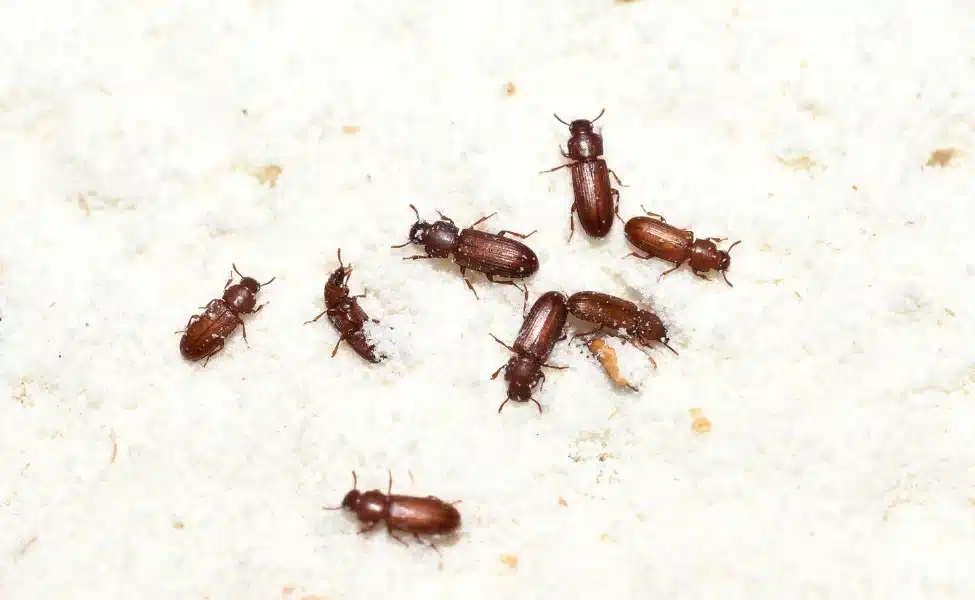
Pantry pests are a group of notorious bugs that dwell in our food storage areas. Here are some common pantry pests and their scientific names: ● Indian Meal Moth: Plodia interpunctella ● Confused Flour Beetle: Tribolium confusum ● Red Flour Beetle: Tribolium castaneum ● Rice Weevil: Sitophilus oryzae ● Saw-toothed Grain Beetle: Oryzaephilus surinamensis ● Drugstore Beetle: Stegobium paniceum ● Cigarette Beetle: Lasioderma serricorne ● Mealworm (Darkling Beetle Larvae): Tenebrio molitor ● Merchant grain beetles
Pantry pests, often encountered in kitchens and storage areas, come in various species, each with distinct characteristics. One common intruder is the Indian Meal Moth (Plodia interpunctella). These small insects, measuring about 1/2 inch in length, sport a distinctive reddish-brown coloration with a hint of copper on their wings. Pantry pests like the Confused Flour Beetle (Tribolium confusum) and the Red Flour Beetle (Tribolium castaneum), both members of the Tenebrionidae family, are notorious for their appearances. They are slender and elongated, with reddish-brown to black hues.
Pantry pests share common habits and behaviors, primarily revolving around their attraction to stored foodstuffs. These pests are relentless in seeking out grains, cereals, flour, nuts, and dried fruits. Their life cycle typically includes an egg, larval, pupal, and adult stage, and it's the larval stage that causes the most damage. Larvae actively feed on food products, leaving behind webbing and fecal matter. This destructive behavior often results in contamination and food spoilage, making pantry pests a nuisance in households and food storage facilities alike.
Get Free Estimate
HOW DO I KNOW IF I HAVE Pantry Pests INFESTATION?
Pantry pests have a knack for sneaking into our kitchens through various entry points. Common locations where these unwelcome intruders gain access include cracks and gaps in walls, electrical outlets, windows, and doors, as well as through improperly sealed food packaging. Once inside, they quickly gravitate towards pantry foods like grains, flour, and cereal.
Visually, pantry pests are often spotted on or near food items. Indian Meal Moths leave their telltale silky webbing and small, brownish caterpillars crawling through your grains. Confused Flour Beetles and Red Flour Beetles are more conspicuous with their slender bodies and reddish-brown to black coloration. In some cases, you may even notice tiny holes in food packaging, a result of their nibbling. Auditory signs include the soft rustling or scratching sounds produced by pantry pests as they move through stored food can be heard if you listen closely in a quiet pantry.
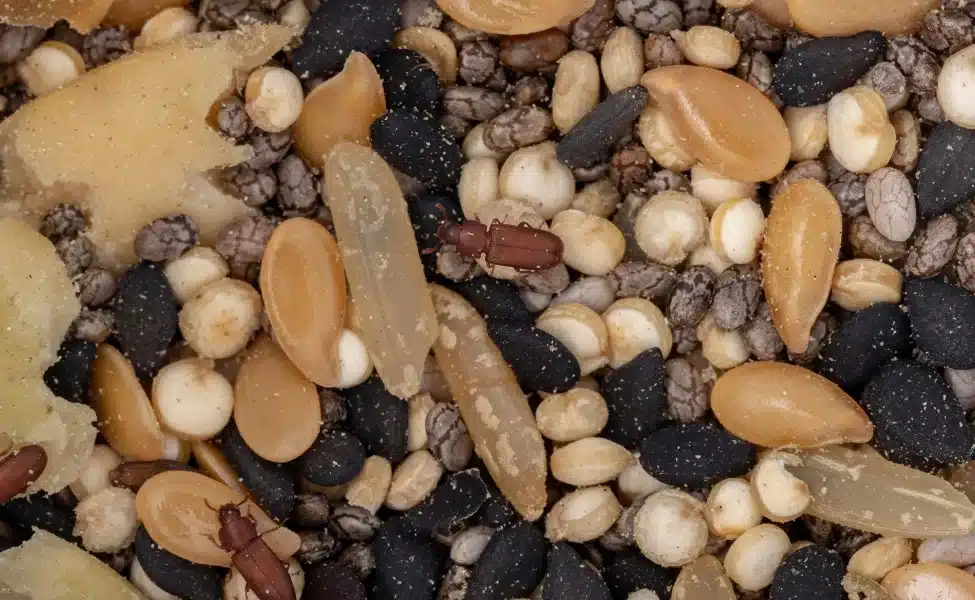
key issues with Pantry Pests infestation in las vegas properties

Items susceptible to infestation by pantry pests encompass a wide array of kitchen staples. Grains, flour, cereals, dried fruits, nuts, and spices are all prime targets for these relentless intruders. Even well-sealed packaging might not deter their persistence, making it crucial to adopt preventive measures.
While pantry pests are more of a culinary nuisance than a health hazard to humans and animals, there are some potential health risks to consider. In sensitive individuals, exposure to pantry pests or their byproducts can trigger allergic reactions, leading to discomfort. However, it's worth noting that such reactions are relatively rare, and the bugs themselves are not known to carry diseases that threaten human or animal health.
Damage caused by pantry pests can be surprisingly extensive. These tiny intruders, when left unchecked, can contaminate a wide range of pantry staples. Their larvae feed voraciously on grains, cereals, flour, and dried fruits, leaving behind unsightly webbing and excrement. Nevertheless, they don't have extensive damage to property.
The extent of pantry pest infestation can vary, from minor, isolated occurrences to full-blown invasions that compromise your entire food supply. It can cause major damage to food businesses where food production takes place at larger scales.
The economic impact of pantry pest infestations should not be underestimated. These unwelcome guests can quickly turn your kitchen into a battleground, forcing the disposal of contaminated food items and necessitating the purchase of replacements. Furthermore, the cost of pest control measures can add up, especially in cases of severe infestations. To mitigate these financial setbacks, early detection, vigilant prevention, and proper food storage practices are essential in preserving both your pantry's contents and your budget.

how to keep Pantry Pests away from my las vegas property?
To keep these pesky intruders at bay from property damage, start by sealing cracks and gaps in your kitchen and pantry areas. Use airtight containers for storing vulnerable food items, reducing their accessibility. Regularly inspect and clean your pantry. Remove items past their expiration dates and food crumbs that might attract these bugs and become a hot spot for their infestation. When it comes to human and pet health, maintaining a bug-free pantry ensures that your stored food remains uncontaminated and safe to consume.
There are a variety of recommended products designed for both home and commercial use. Pest-resistant containers, pantry moth traps, and natural repellents can help prevent infestations. Sticky traps and diatomaceous earth are also valuable tools in your pest control arsenal, serving as non-toxic methods to combat pantry pest infestation.
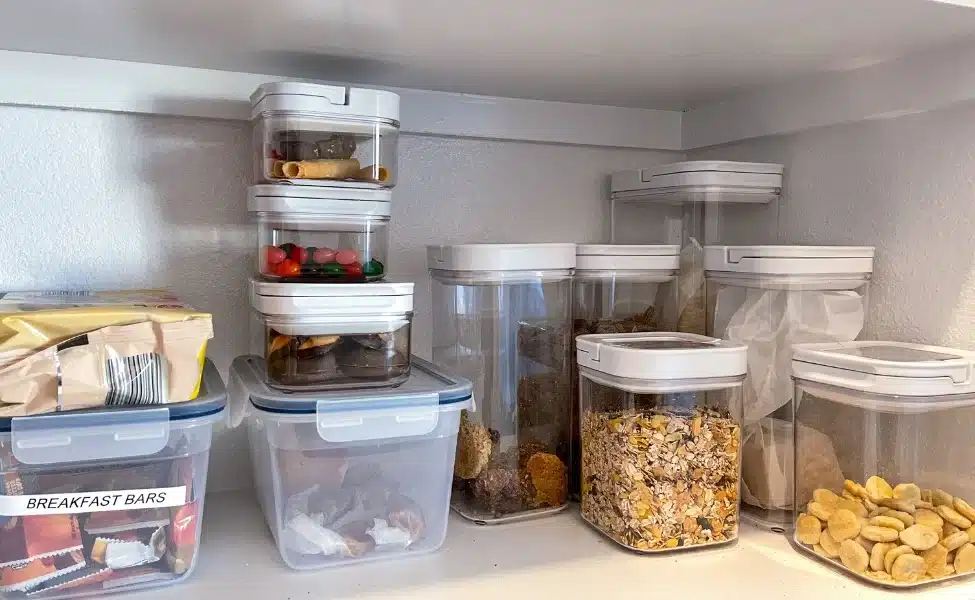
Pest control technicians possess the knowledge and tools to address infestations promptly using the right pest control treatments, ensuring that your kitchen remains a pest-free environment. When it comes to pantry pest management, a combination of preventive measures, recommended products, and guidance from licensed pest control companies is your best defense against these persistent intruders.

There are common mistakes to avoid to ensure effective results. One common error is using the wrong type of pesticide, which may not target pantry pests effectively. Overusing pesticides can also be counterproductive, as it may lead to pesticide resistance or environmental harm. Neglecting proper sanitation, such as failing to dispose of infested items and thoroughly clean affected areas, can leave lingering infestation sources.
essential measures: is dyi Pantry Pests control effective?
Start by identifying the source of the infestation, often food containers or cracks in pantry walls. Remove and discard any contaminated items. Thoroughly clean and sanitize affected areas, using a mixture of soap and water, to eliminate any remaining bugs and larvae. For a more targeted approach, consider applying diatomaceous earth or boric acid, natural yet effective remedies, in cracks and crevices where pantry pests hide. Additionally, pantry moth traps and insecticide sprays, specifically designed for pantry pests, can be valuable allies in your battle against these pest concerns.
Keep all pesticides and insecticides out of their reach, securely stored in locked cabinets. Ensure treated areas are well-ventilated, and restrict access to the pantry until the treatment is complete and surfaces are dry. Be cautious when using harsh chemicals, follow product instructions diligently, and consider using childproof locks on pantry doors to prevent curious little hands or paws from accessing treated areas.
Get Free Estimate
how often should i have my home sprayed for effective Pantry Pests control in las vegas?
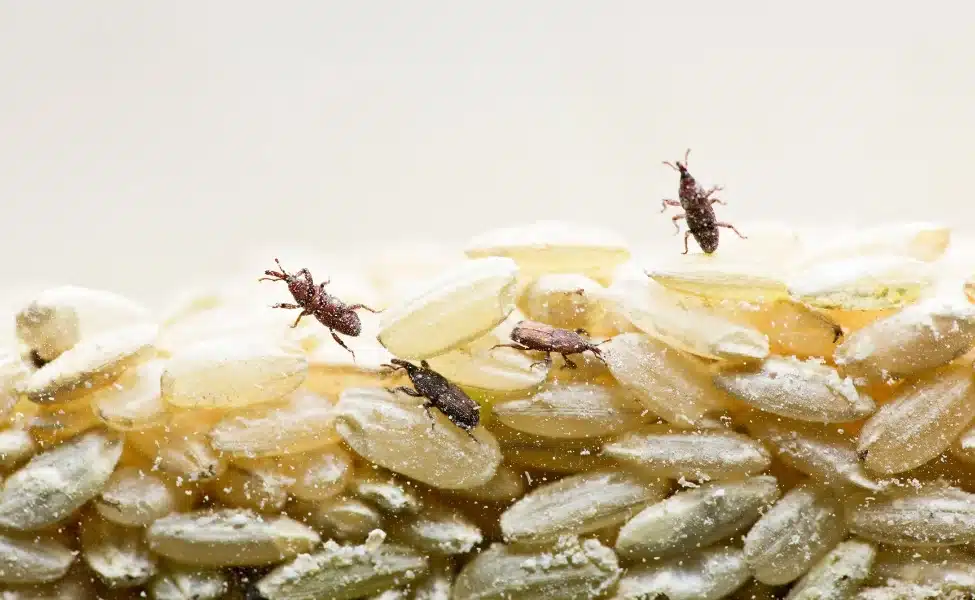
In general, it's advisable to conduct routine inspections of your pantry every few months, even when you haven't noticed any signs of infestation. These proactive checks can help identify potential issues early on. However, the frequency of treatments may vary depending on your location, climate, and past infestations. Some homeowners may require one-time service, while others as much as year-round pest control treatment.
If you start noticing pantry pests reappearing, despite previous treatments, it's a clear sign that further action is needed. Also, any visible signs of infestation, such as webbing, larvae, or strange odors, should prompt an immediate reassessment.
Call the pest control service provider, their intervention becomes crucial when DIY methods prove ineffective or when dealing with complex and persistent pantry pest problems. They use effective products to deal with common pest control issues.
why trust prime pest control as your Pantry Pests control company in las vegas?
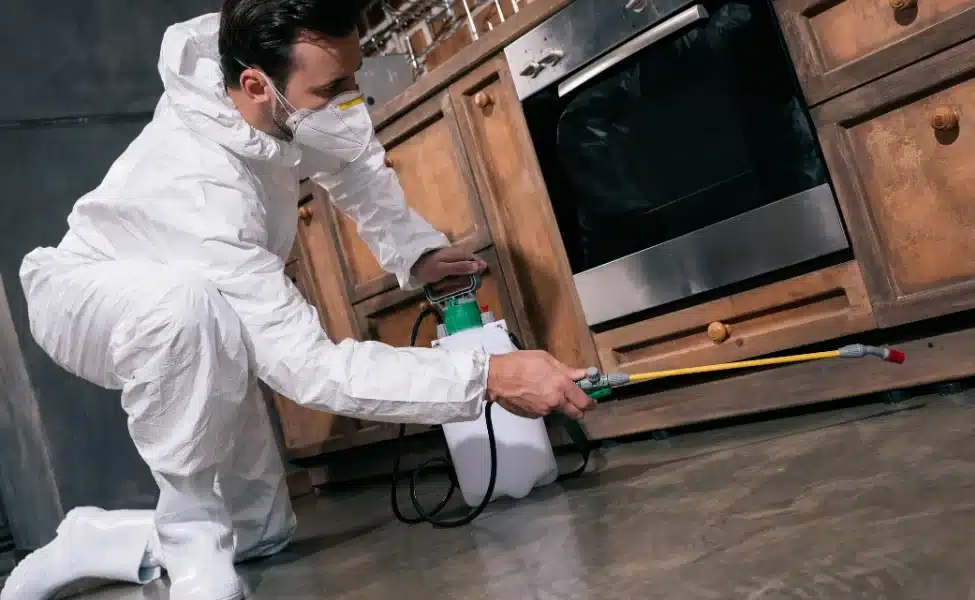
We are a service provider with a proven track record of handling pantry pest infestations in Las Vegas pest control industry. Our experienced control professionals understand the nuances of different pantry bug species and have effective strategies for eradication.
Each infestation may require a unique approach. Our pest control experts offer customizable treatment plans tailored to your specific needs. They conduct thorough assessments and design strategies that address the severity of the infestation and the layout of your space.
Effective pest control relies on the use of high-quality products. We ensure that we use quality pest control products that are safe for your home and effective in eliminating these pantry pests.
Inquire about the treatment methodology used by the pest control service. They should provide a clear explanation of their process, including the types of pesticides or insecticides they use and their application methods.
Trustworthy pest control services like us are certified and licensed in accordance with local regulations. These certifications demonstrate our commitment to following industry standards. Additionally, we offer warranties and guarantees for our services.
Reading our customer testimonials and reviews can provide valuable insights into the reliability and effectiveness of our pest control service. The positive feedback from clients who have had success in dealing with these pantry invaders is a testament to our reliable pest control services. We promise to provide exceptional pest control services.
Don't Let Pantry Pests Take Over!
FAQs
Pantry Pests Pest Control FAQs
What are pantry pests and what are the causes of their infestation?
Pantry pests are common household pests that infest stored food items in your pantry or kitchen, including grains, cereals, flour, and dried fruits. They are usually introduced to your kitchen through contaminated food packages or can enter through cracks and openings in your kitchen.
What are the common types of pantry pests?
Common types include Indian Meal Moths, Confused flour beetles, Red Flour Beetles, Rice Weevils, Saw-toothed Grain Beetles, Drugstore Beetles, merchant grain beetles and Cigarette Beetles.
Are pantry pests harmful for humans?
Pantry pests are generally not harmful to humans when consumed accidentally. While finding these pests in your food can be unpleasant and unappetizing, they are not known to carry diseases that pose a significant health risk to humans. It's important to note that these pantry pests can contaminate food items with their excrement, shed skin, and webbing.
What attracts pantry pests in Las Vegas homes?
Pantry pests are attracted to stored food items, especially grains, flour, cereals, pasta, pet-food, dried fruits, nuts, crackers and snacks, sweets and sugars and spices commonly found in pantries and kitchens.
How can I ensure long-term prevention of pantry pest infestations?
Ensuring long-term prevention of pantry pest infestations requires consistent efforts and vigilant practices. Here are some steps you can take to help keep your pantry pest-free over the long term:
- Store food properly
- Inspect food source.
- Maintain a clean pantry
- Seal cracks and gaps
- Use moth traps
- Maintain dry conditions
- Educate household members
- Call Pest control company today
Contact Prime Pest Control for a free estimate on specialized treatment services today!
Request Pricing
Areas We Serve
Las Vegas
North Last Vegas
Summerlin
Henderson
Enterprise
Spring Valley
Get a Personalized Quote in 24 Hours






